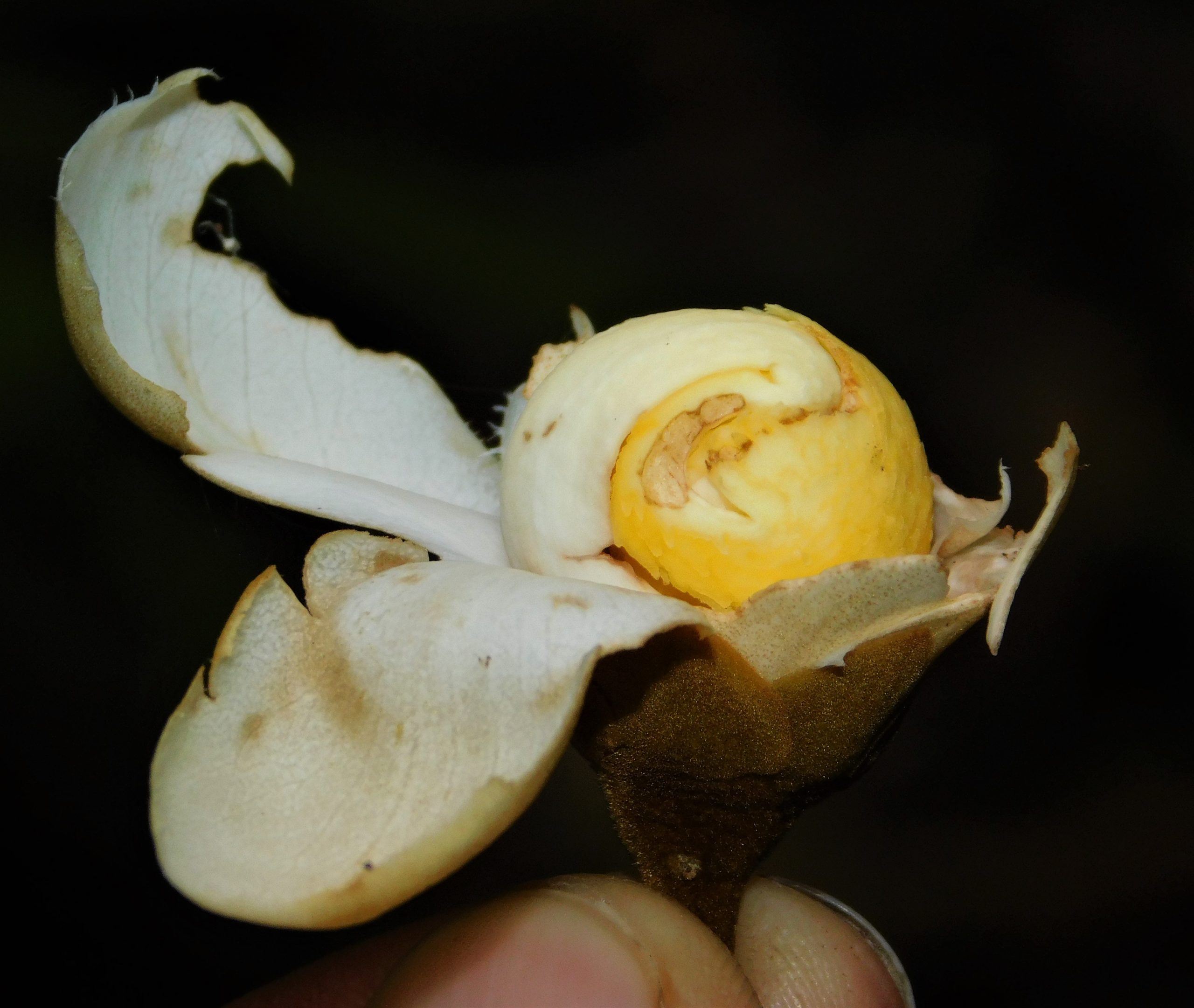
Couratari scottmorii
Couratari scottmorii
Copo hediondo
Audio
English Audio
Audio en Español
Plant Story
This rare species grows up to 50 meters tall and produces scaly bark and leaves that turn reddish when they fall. Its flowers are white and its fruits are conical and woody. Once mature, its fruits open its top, called the operculum, and winged seeds are released and dispersed by the wind. Its wood is used locally for construction. The very restricted distribution of this species, coupled with deforestation and historic illegal logging, rang the alarm bells, and the species is now classified as endangered in Costa Rica and its logging is completely prohibited. This species is distributed only in the southern Pacific region of Costa Rica and in southeastern Panama. The largest known populations are found on Costa Rica’s Osa Peninsula.
Historia de la planta
Esta especie es escasa, es un árbol de hasta 50 metros de alto, de corteza escamosa, las hojas cuando caen se tornan rojizas. Las flores son blancas. Los frutos son cónicos, leñosos y cuando maduran, liberan una tapa llamada opérculo y salen unas semillas aladas que son dispersadas por el viento. La madera es empleada localmente para construcción. La distribución tan restringida de esta especie, sumado a la la situación de deforestación y tala ilegal de hace un tiempo, generaron alertas y se catalogó en Costa Rica como una especie en Peligro de Extinción y su corta se ha vedado completamente. Esta especie es conocida únicamente en el pacífico sur de Costa Rica y sureste de Panamá. Las poblaciones más grandes conocidas se encuentran en la Península de Osa.
Plant details
Plant Information
Botanic Name:
Couratari scottmorii
Common name(s):
Copo hediondo, Copo hediondo
Family
Lecythidaceae
Phenology
Flowering Months:
January, February, May, September, October
Fruiting Months:
January, February, March, May, October, November
Conservation
IUCN category:
Vulnerable / Vulnerable (VU)
CITES:
Interesting Links
Plant Locations
Copo hediondo
Plant details
Audio
English Audio
Audio en Español
Story / Historia
Plant Story
This rare species grows up to 50 meters tall and produces scaly bark and leaves that turn reddish when they fall. Its flowers are white and its fruits are conical and woody. Once mature, its fruits open its top, called the operculum, and winged seeds are released and dispersed by the wind. Its wood is used locally for construction. The very restricted distribution of this species, coupled with deforestation and historic illegal logging, rang the alarm bells, and the species is now classified as endangered in Costa Rica and its logging is completely prohibited. This species is distributed only in the southern Pacific region of Costa Rica and in southeastern Panama. The largest known populations are found on Costa Rica’s Osa Peninsula.
Historia de la planta
Esta especie es escasa, es un árbol de hasta 50 metros de alto, de corteza escamosa, las hojas cuando caen se tornan rojizas. Las flores son blancas. Los frutos son cónicos, leñosos y cuando maduran, liberan una tapa llamada opérculo y salen unas semillas aladas que son dispersadas por el viento. La madera es empleada localmente para construcción. La distribución tan restringida de esta especie, sumado a la la situación de deforestación y tala ilegal de hace un tiempo, generaron alertas y se catalogó en Costa Rica como una especie en Peligro de Extinción y su corta se ha vedado completamente. Esta especie es conocida únicamente en el pacífico sur de Costa Rica y sureste de Panamá. Las poblaciones más grandes conocidas se encuentran en la Península de Osa.
Plant Information
Botanic Name
Couratari scottmorii
Common name(s)
Copo hediondo
Family
Lecythidaceae
Phenology
Flowering Months
January, February, May, September, October
Fruiting Monts
January, February, March, May, October, November
Conservation
IUCN category
Vulnerable / Vulnerable (VU)
CITES
Interesting Links
Plant Locations
Post A Comment
You must be logged in to post a comment.










No Comments